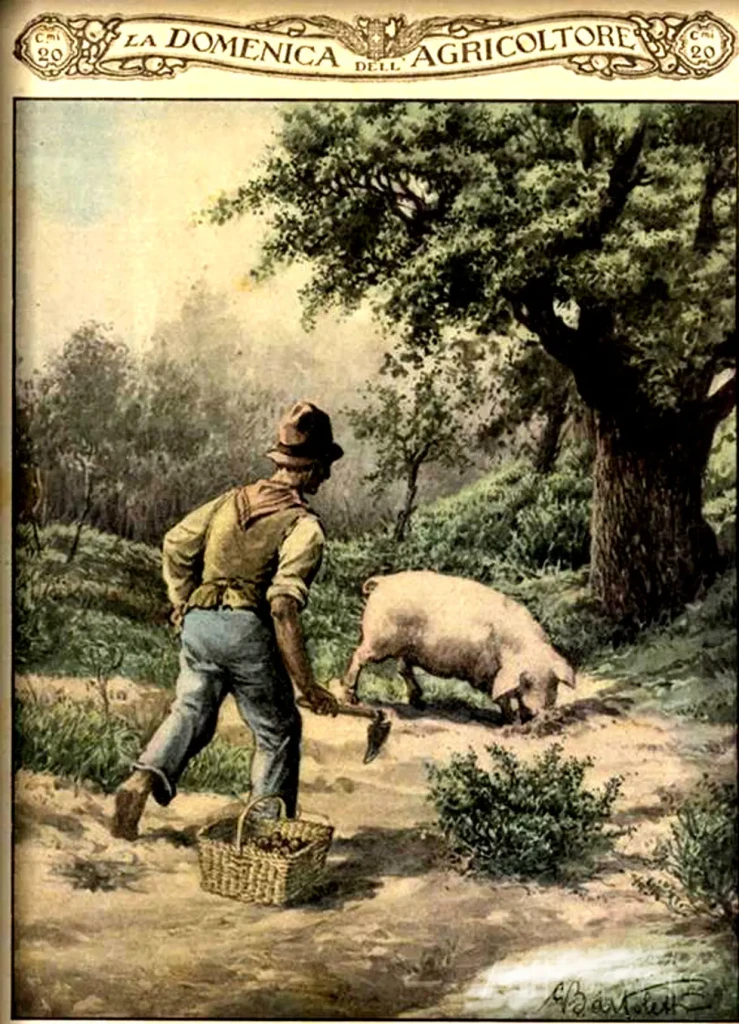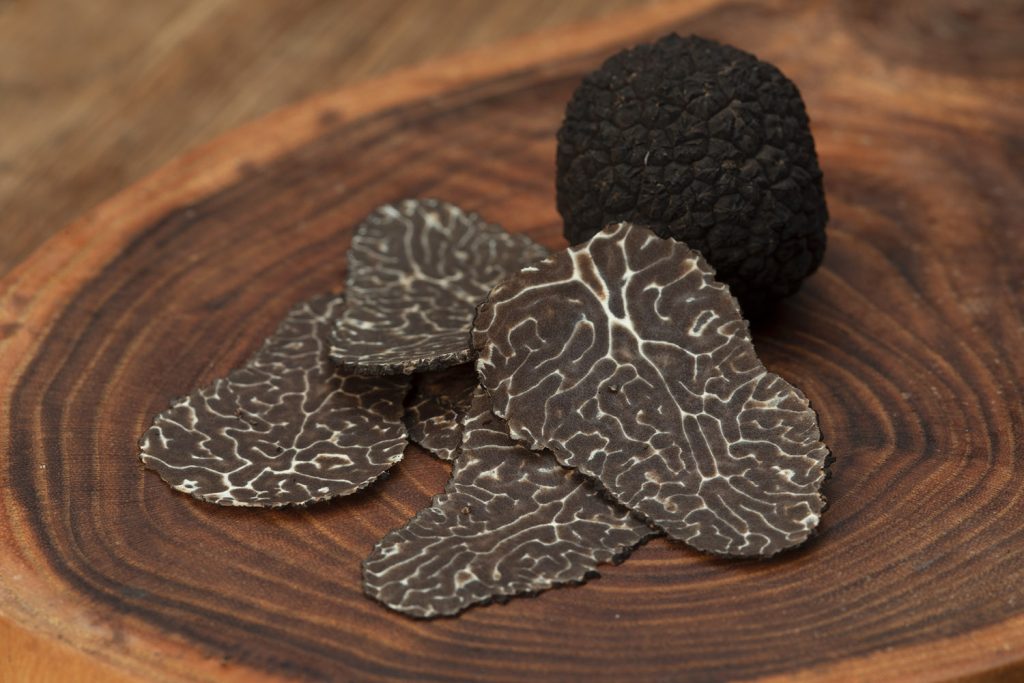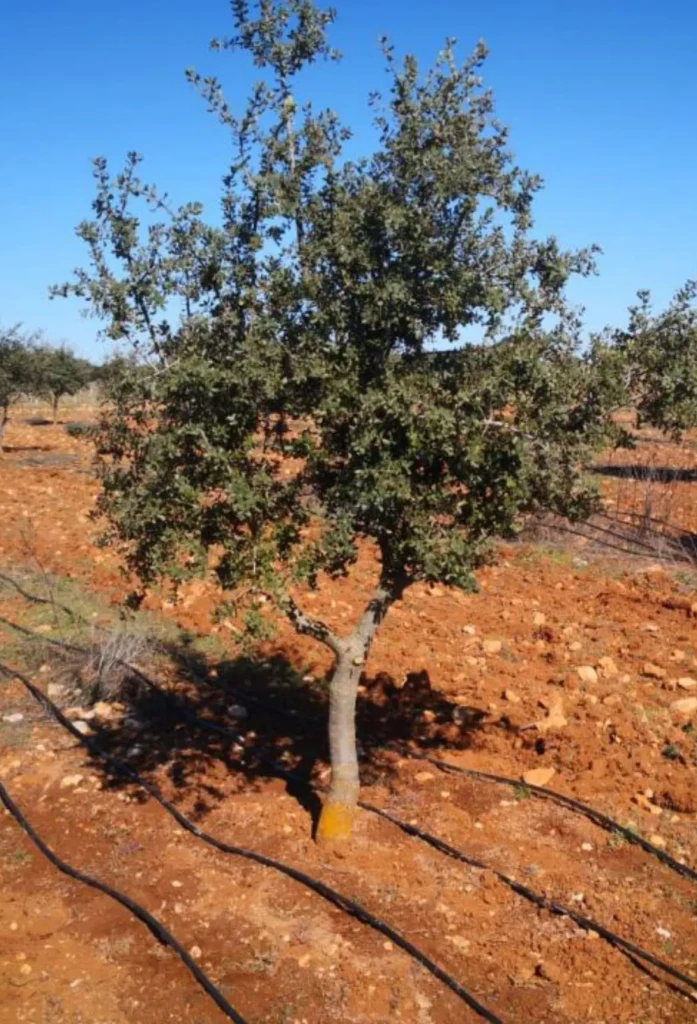Italy has a long tradition of truffle knowledge (with taxonomic works going back centuries), but modern experimental truffle cultivation (using inoculated seedlings to establish “tartufaie” / truffle orchards) took off in the second half of the 20th century, especially for the black truffle (Tuber melanosporum). Cultivation of the white truffle (T. magnatum) proved far more challenging, and even today only small experimental successes exist.
Natural habitats vs. cultivated areas
Regional data: e.g. in Umbria, several hundred registered tartufaie and several thousand hectares of natural truffle grounds were recorded in the early 2000s; cultivated truffle orchards (new plantations, “tartufaie coltivate”) expanded to several hundred hectares in some regions.
General trend: cultivated truffle orchards have expanded steadily (supported by state/regional subsidies and specialized nurseries), while natural habitats often declined due to land-use change (vineyards, orchards, urbanization, intensive agriculture). In some places, habitat restoration and controlled tartufaie management preserved or improved natural sites.
Climate impacts: recent reports show climate change, drought, and heat extremes are affecting yields, especially of white truffle; some sources mention losses of up to 30% in certain areas over the past three decades.
Black (T. melanosporum) vs. white (T. magnatum)
Black truffle — since the late 20th century, cultivation is economically viable in Italy; inoculated orchards can reliably produce.
White truffle — remains extremely difficult to cultivate; only small-scale, experimental plantations exist. Natural habitats are still the main source.
Key researchers and works
Alessandra Zambonelli — leading Italian truffle biologist; editor/author of volumes on edible mycorrhizal mushrooms and truffle culture.
Mirco Iotti, D. Donnini, A. Amicucci, V. Stocchi — publications on seedling inoculation, quality assessment, and truffle orchard establishment.
M. Nuti — ecological and economic studies on truffle–tree systems.
S. Reyna, J. Bonet (Spanish colleagues collaborating with Italians) — comparative studies on European black truffle cultivation and reforestation
Major works & reviews
Zambonelli, A., Iotti, M., & Hall, I. (2015). Current status of truffle cultivation: recent results and future perspectives. Italian Journal of Mycology, 44(1), 31–40.
– Review of Tuber cultivation progress in Italy.Bencivenga, M., Baciarelli Falini, L., Donnini, D., Di Massimo, G. (2009). The cultivation of truffles in Italy. Springer.
– Comprehensive overview of Italian truffle cultivation and orchards.Bencivenga, M., Baciarelli Falini, L. (2012). Manuale di Tartuficoltura. Esperienze di coltivazione dei tartufi in Umbria. Regione Umbria – Univ. of Perugia.
– Regional handbook blending practice and science.Regione Piemonte. (2019). Tartufaie naturali e controllate.
– Distinguishes between natural and controlled tartufaie, with references.Graziosi, S., Hall, I. R., & Zambonelli, A. (2022). The Mysteries of the White Truffle: Its Biology, Ecology and Cultivation. Encyclopedia, 2(4), 1959–1971.
– Review of T. magnatum biology and cultivation challenges.Pizzeghello, D., et al. (2024). A case study in Acqualagna area (central Italy). Discover Soil.
– Soil properties in truffle cultivation sites.Monaco, P., et al. (2020). The bacterial communities of Tuber aestivum: preliminary results from Molise (Italy). Annals of Microbiology.
– On microbial interactions in Italian truffle grounds.Čejka, T., Trnka, M., & Büntgen, U. (2023). Sustainable cultivation of the white truffle (Tuber magnatum) requires ecological understanding. Mycorrhiza, 33, 291–302.
– On sustainability and ecological factors in white truffle cultivation.







